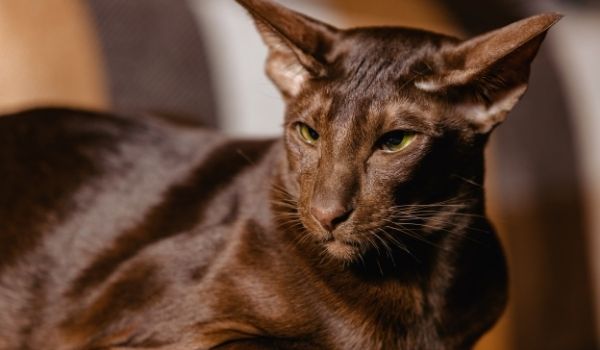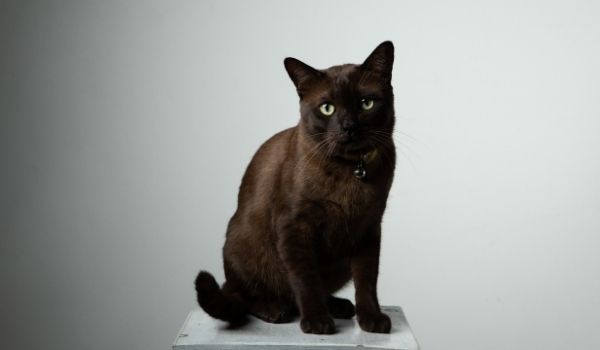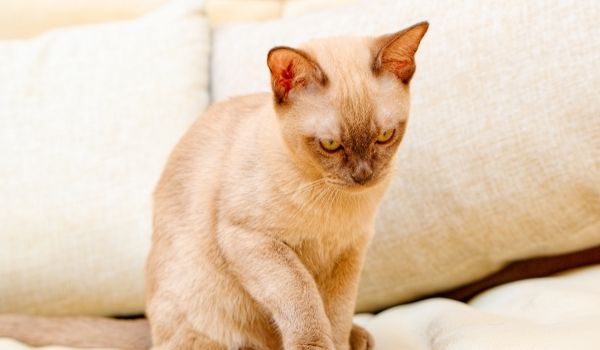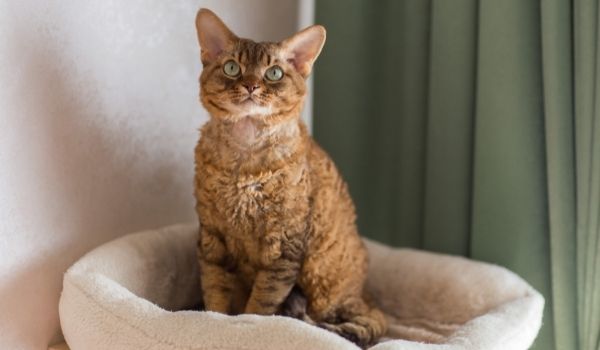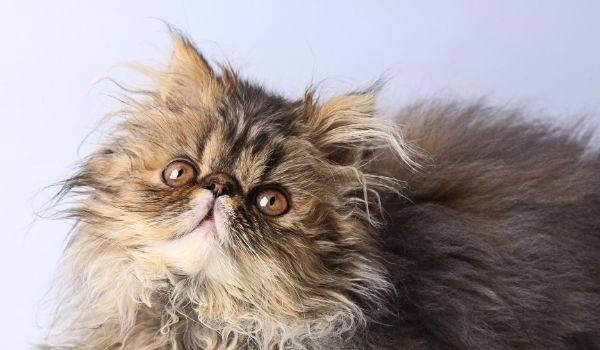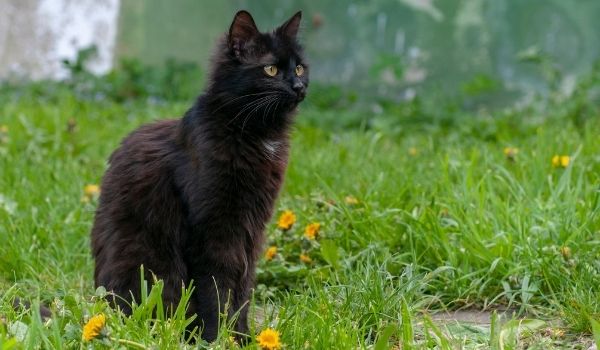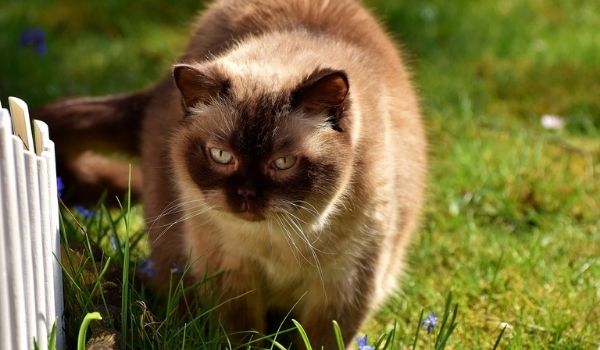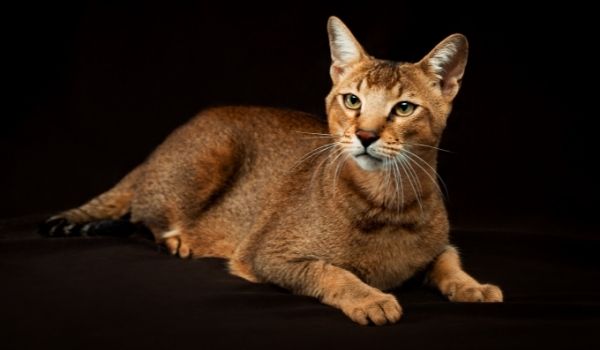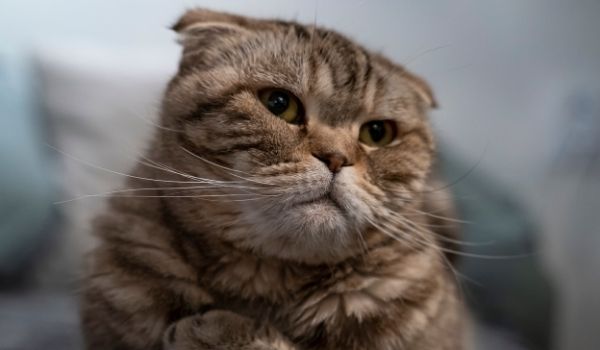If you are a dedicated cat enthusiast, you would have heard of—or come across—solid black or solid white cat breeds but have you ever thought about why there are no common brown cat breeds around? Solid brown cats are difficult to find because such cat breeds are rare—cats usually have markings, stripes, or points on their coats, or they are solid black or white. There are, however, some exceptions of predominately brown cat breeds all over the world. Let’s go over the breeds in detail—their history, temperament, size, lifespan, coat type, and much more.
1. Havana Brown
Key Features
Eye Color: Green
Temperament: Playful and sensitive
Weight: Male: Medium 8 – 12 lbs. Female: Small <8 lbs.
Origin: England
Lifespan 8 – 13 years
History
In the 1950s, a group of cat enthusiasts in England decided to mix two cat breeds to create a solid brown cat. They eventually created chestnut-brown kittens by breeding the shorthaired black cat with a chocolate-point Siamese—as both carry the chocolate genes. The Havana Brown cat was exported to the U.S. in the late 1950s, and that is when the breed began to go two different ways.
In the U.S., the breed is still known as the Havana Brown. However, in Britain, Havana Brown cats are known as the brown Oriental Shorthair. The bodies and head shape of the Havana Brown cats distinguish them from the British’s brown Oriental Shorthairs.
Coat Type and Color
Havana Brown cats have muscular and firm bodies with short, smooth, and reddish-brown fur. Even though the fully grown Havana Brown cats are solid brown, kittens and young adult cats can have the tiniest hint of tabby markings—which may disappear over time.
Health
Havana Brown cats are generally healthy, but they may suffer from upper respiratory infections.
2. Burmese
Key Features
Eye Color: Gold or yellow
Temperament: Active and curious
Weight: Male: Large >12 lbs. Female: Medium 8-12 lbs.
Origin: Burma
Lifespan 9 – 13 years
History
The first-ever Burmese cat was called “Wong Mau,” who was brought to the U.S. in 1930 by Dr. Joseph Thompson. Siamese cats with dark brown coats were common; hence, people assumed the Burmese cat to be a dark Siamese. However, Dr. Thompson decided to breed the Burmese cat with a seal-point Siamese that resulted in dark brown kittens and became the foundation of Burmese’s new, distinctive strain.
The breed was officially registered by the Cat Fanciers Association (CFA) in 1936. Unfortunately, due to continued extensive crossbreeding with Siamese, the CFA suspended the breed recognition a decade later. However, the ban was lifted in 1954 by the CFA as several American breeders attempted to refine the unique Burmese standard.
Coat Type and Appearance
The Burmese have a short and silky coat in various colors—sable, champagne, and dark brown. They have compact bodies with a round head and large, yellow, or gold eyes. Their ears are slightly tilted forward and rounded at the tips.
Health
Burmese are generally healthy but may develop Gingivitis over time. They are also sensitive to anesthesia. Other common diseases the Burmese may suffer from include:
- Lipemia of the aqueous
- Corneal dermoid
- Hypokalemic polymyopathy
- Congenital peripheral
3. Devon Rex
Key Features
Eye Color: Aqua, blue, orange, yellow, copper, green, gold, hazel, odd-eyed, amber
Temperament: Friendly, intelligent, interactive
Weight: Male: Small <8 lbs. Female: Small <8 lbs.
Origin: England
Lifespan 9 – 13 years
History
A kitten named Kirlee was born in Devon, England, in 1959. It was first believed that the kitten shared the same genetic markup as the Cornish Rex—a breed that was found a decade earlier than the Devon Rex. However, after breed testing, it was concluded that Kirlee resulted from a natural genetic mutation. Doctors and breeders could not find the real ancestors of the Devon Rex, but it is believed that the mother was a stray cat and the father was a roaming tom with a curly coat.
Devon Rex was registered as a separate breed by the Cat Fanciers Association in 1979.
Coat Type and Appearance
Devon Rex has curly and soft coats with large ears, striking eyes, and high cheekbones. They have medium-sized and muscular bodies that feel hard when touched. Devon Rex has slim and long legs with small oval claws. They also have long tails covered with short fur.
Health
Even though Devon Rex cats are generally healthy, they may suffer from diseases such as:
- Hip dysplasia
- Malassezia dermatitis
- Hypertrophic cardiomyopathy
- Congenital hypotrichosis
4. Persian
Key Features
Eye Color: Copper, odd-eyed, green, hazel
Temperament: Quite, sweet, and intelligent
Weight: Male: Large >12 lbs. Female: Medium 8 – 12 lbs.
Origin: Mesopotamia, modern-day Iran
Lifespan 8 – 11 years
History
The Persian cat originated in Mesopotamia—which was later known as Persia, and now Iran. The cat was later brought to Europe in 1626 by an Italian nobleman world traveler, Pietro Della Valle. Persian cats were later exported to the U.S. in the late 19th century.
Here at home, they quickly became the object of affection of all and sundry. Today, Persian cats are the fourth most popular cats in the United States.
Coat Type and Appearance
Persian cats are known for their long, thick, soft, and shiny fur coat. They have round eyes, a short nose, full cheeks, and small ears with rounded tips. Their legs are short and thick with small rounded claws. Their tail is short but proportional to the length of the body.
Health
Persian cats may seem healthy, but due to their flat facial structure and long coat, they are prone to certain health complications. Some of the most common diseases found in Persian cats are:
- Polycystic kidney disease
- Dental malocclusions
- Breathing difficulty
- Cherry eye and entropion
5. York Chocolate
History
The first York chocolate was born in 1983 when a black and white female cat mated with an all-black male farm cat. The owner of the farm where the York Chocolate cat was born—Janet Chiefari—named her Brownie and eventually started breeding the solid brown cats.
The CFA officially registered the York Chocolate cats in 1995.
York Chocolate cats have a long and dark brown coat which is lighter during kittenhood. They have a medium-sized body with a short to medium neck and a fully rounded chest. Their legs are long with a medium-sized tail.
Health
Fortunately, the York Chocolate cats are among the healthiest cat breeds, and there are no specific health complications associated with this breed. However, it is highly advised that you take your cat for regular vet checkups to ensure a healthy lifestyle.
6. British Shorthair
Key Features
Eye Color: Blue, odd-eyed, copper, gold
Temperament: Overly affectionate and friendly
Weight:
Origin: Great Britain
Lifespan 12 – 17 years
History
The British Shorthair originated in England. The British Shorthair was a popular cat back then—famously known as the Puss in Boots and the grinning Cheshire Cat of Alice in Wonderland. During the two World Wars, the breed almost went extinct but was later revitalized. The CFA officially registered the British Shorthair in 1980, and the American Cat Association recognized the British Shorthair in 1967.
Coat Type and Appearance
The British Shorthair has a thick and short coat with a rounded body. They have big round eyes, round cheeks, and round heads. The body is compact but muscular with a broad chest. They also have strong legs with rounded paws and a thick rounded tail.
Health
Even though the British Shorthair is a generally healthy cat, Gingivitis and hypertrophic cardiomyopathy have been observed in the Shorthair, both of which can affect the breed at any age.
7. Chausie
Key Features
Eye Color:Many colors, including blue and odd-eyed
Temperament: Highly intelligent, energetic, and adventurous
Weight: 9 to 20 pounds
Origin: Egypt
Lifespan 15 to 20 years
History
Though not much is known about the origin of the Chausie cat breed, it is widely believed that they hailed from the ancient lands of Egypt. That said, in the 1990s, Chausie was created by mixing many different domestic cats, including Abyssinian and Domestic Shorthaired cats.
While Chausie was recognized as a breed by the ICA in 1995, TICA granted Chausie the championship status in 2013.
Coat Type and Appearance
Chausie cats have short and bit coarse coats featuring solid black, tabby patterns—brown ticked and black grizzled.
Chausie cats look quite similar to cougars with their wedge-shaped head, angular and high cheekbones, large ears, and long muzzles. Their cougarsih appearance is enhanced when they have tufts at the top of their ears. Chausie has a tall and long body and is thus considered one of the largest domestic cat breeds, with, of course, Maine Coon being the largest.
Health
Chausie is an overall healthy and robust cat breed. Even a few congenital health issues that they are susceptible to are easily avoided by careful breeding by reputed breeders. That said, Chausie cats are prone to overeating. They do need high caloric intake given their highly active lifestyle, but if your Chausie is not getting ample exercise, she will grow obese. So watch out for your cat’s caloric intake.
8. Scottish Fold
Key Features
Eye Color:Copper or gold
Temperament: Easygoing, affectionate, social
Weight: 6 to 13 pounds
Origin: Scotland
Lifespan 14 to 16 years
History
As evident from its name, Scottish Fold hails from Scotland. The breed started with a low-key kitten named Susie, which had uniquely curled ears. Given the unique curled ears of the kittens, it was bred with American Shorthair and British Shorthair, and with careful breeding, the Scottish Fold breed was established.
Though breed development had started in the 1960s, it was granted championship status by the CFA in 1978.
Coat Type and Appearance
Scottish Fold is a medium-sized cat with a dense and resilient coat. They come in both shorthaired and long-haired coats. They feature almost every color combination and pattern except pointed colors.
A unique feature of Scottish Folds that makes them stand out in the crowd is their folded ears. That said, not all kittens birthed by Scottish Fold have folded ears. But these Scottish Fold kittens with straight ears are not permitted in show rings.
Besides their folded ears, Scottish Folds have large round eyes, rounded whiskers, and a snubbed nose. They are often listed as one of the flat face cat breeds. They are quite popular among cat lovers and have even found a home in the hearts of many celebrities. Famous singer, Taylor Swift, owns two Scottish Folds named Olivia Benson and Meredith Grey.
Health
Scottish Folds are undoubtedly are one of the cutest cat breeds, but they are prone to several health issues. The Governing Council of the Cat Fancy (GCCF) has even banned the Scottish Fold breed since the 1970s.
- Degenerative joint disease
- Polycystic kidney disease
- Hypertrophic cardiomyopathy

